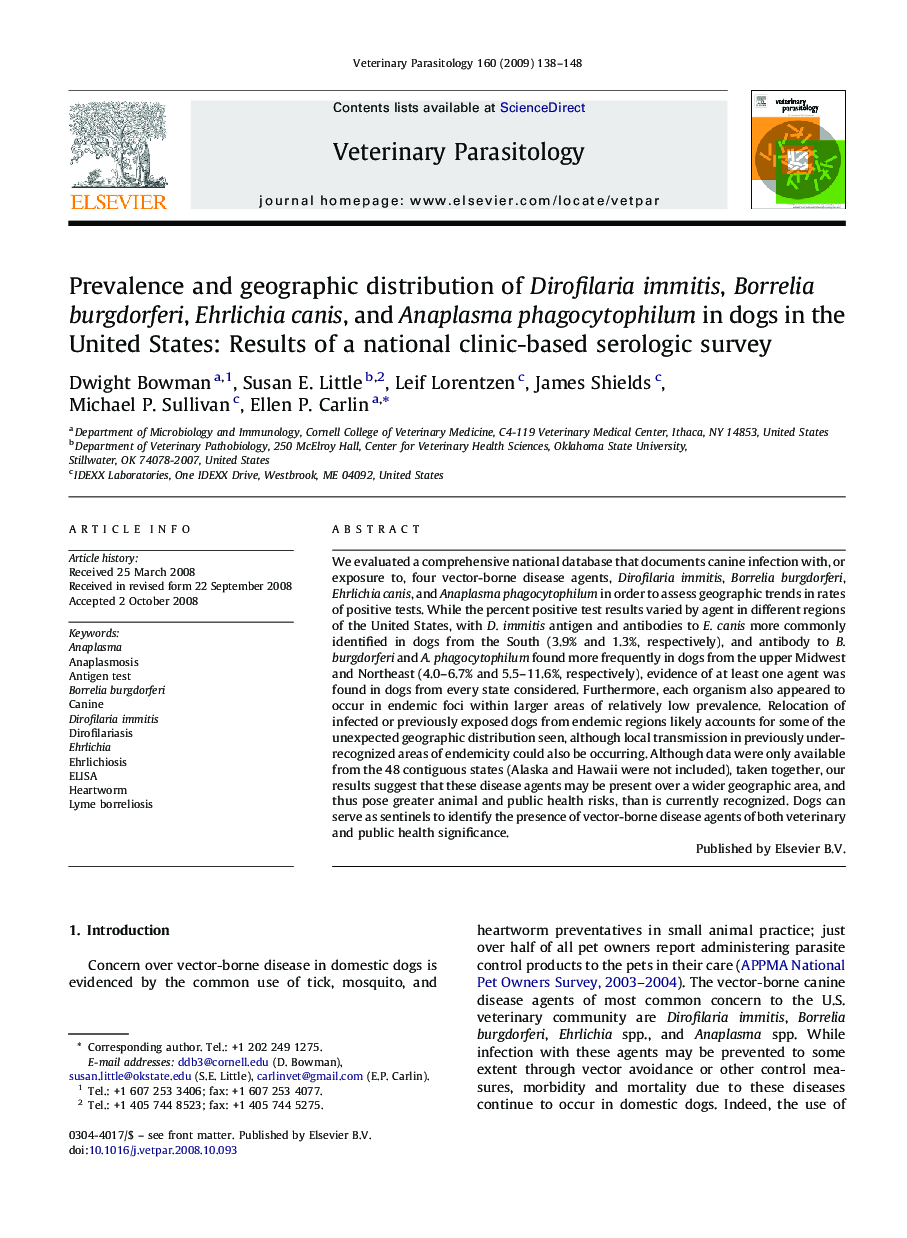| Article ID | Journal | Published Year | Pages | File Type |
|---|---|---|---|---|
| 2471315 | Veterinary Parasitology | 2009 | 11 Pages |
We evaluated a comprehensive national database that documents canine infection with, or exposure to, four vector-borne disease agents, Dirofilaria immitis, Borrelia burgdorferi, Ehrlichia canis, and Anaplasma phagocytophilum in order to assess geographic trends in rates of positive tests. While the percent positive test results varied by agent in different regions of the United States, with D. immitis antigen and antibodies to E. canis more commonly identified in dogs from the South (3.9% and 1.3%, respectively), and antibody to B. burgdorferi and A. phagocytophilum found more frequently in dogs from the upper Midwest and Northeast (4.0–6.7% and 5.5–11.6%, respectively), evidence of at least one agent was found in dogs from every state considered. Furthermore, each organism also appeared to occur in endemic foci within larger areas of relatively low prevalence. Relocation of infected or previously exposed dogs from endemic regions likely accounts for some of the unexpected geographic distribution seen, although local transmission in previously under-recognized areas of endemicity could also be occurring. Although data were only available from the 48 contiguous states (Alaska and Hawaii were not included), taken together, our results suggest that these disease agents may be present over a wider geographic area, and thus pose greater animal and public health risks, than is currently recognized. Dogs can serve as sentinels to identify the presence of vector-borne disease agents of both veterinary and public health significance.
